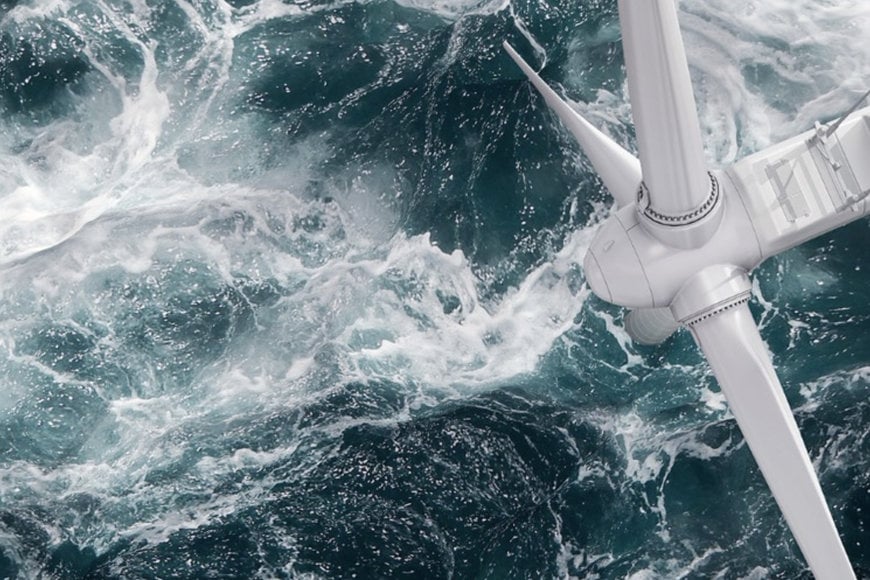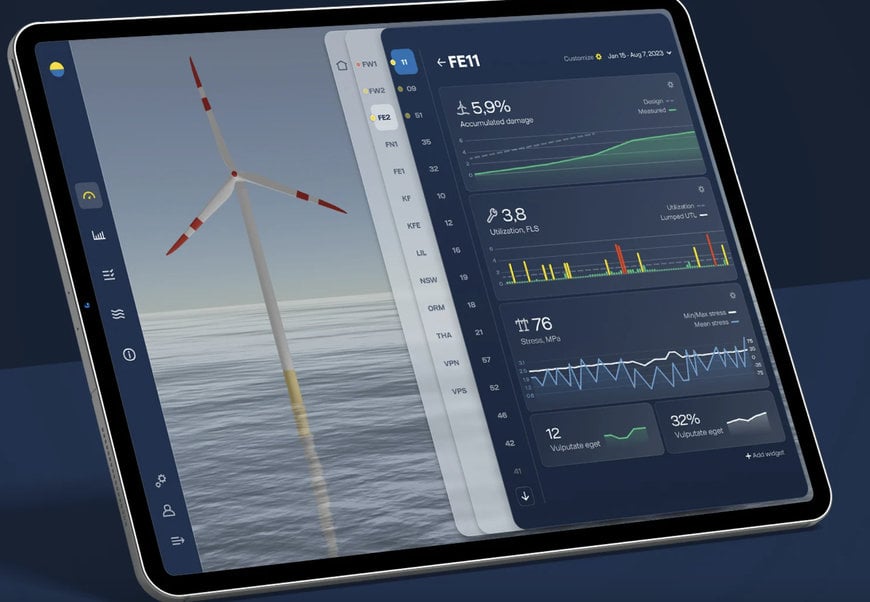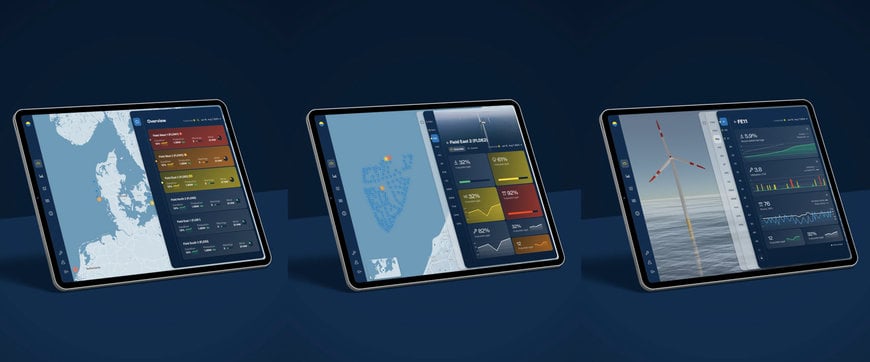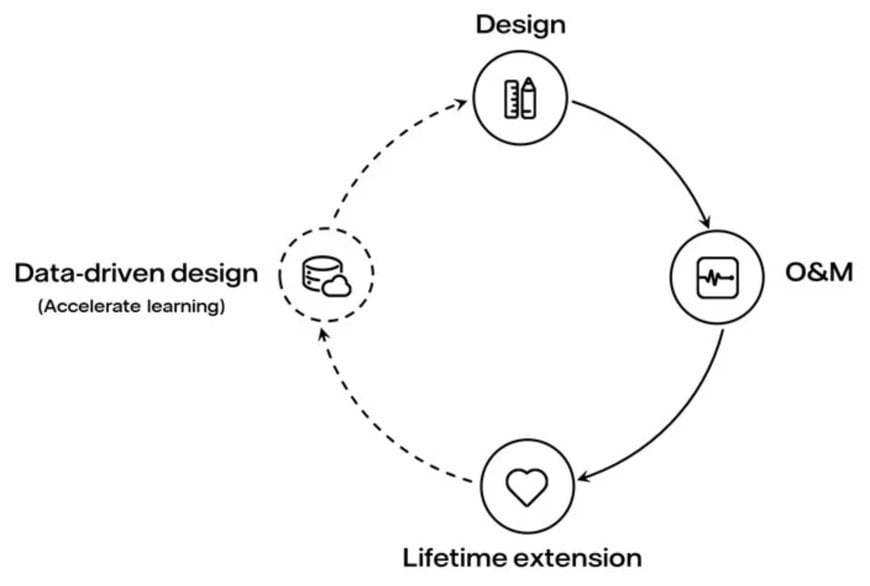www.magazine-industry-usa.com
29
'24
Written on Modified on
DIGITAL TWINS – A ROAD TO MORE PROFITABLE OFFSHORE WIND
Digital twins can help Vattenfall and the wind industry get maximum value of its offshore wind farms.
group.vattenfall.com

Offshore wind farms were introduced some 30 years ago and are now considered a mature industry, where business cases have until recently been based on subsidised markets. These markets are, however, now disappearing. Together with recent years’ struggles in offshore wind, this has called for the implementation of new technology to optimise the design of new wind turbines and to keep existing wind turbines spinning most efficiently and for as long time as possible – also beyond their original expected design life.
The telltale twin
“Without thinking about it, people use digital twins on a daily basis to find their way around,” Nadir Azam, Strategic Leader at Vattenfall’s Support Structure Integrity team, explains.
“Google Maps is one such example. It is our digital mirror of the world and contains information about a multitude of things such as restaurants, their opening hours, menu and rating and then it also offers real-time information on travelling time based on distance, traffic congestions etc. It is very simple to use and understand, but behind the surface, it is a complex system based on advanced technologies such as machine learning and AI. We are developing the equivalent of Google Maps for offshore wind farms”
In the wind industry, digital twins can be a powerful tool to optimise wind turbine design, in proactive operation and maintenance (O&M) and to potentially extend the turbines’ lifetime. Vattenfall’s state-of-the-art digital twins are based on data from sensors installed on the physical wind turbines. The sensors provide data of the structural behaviour of the individual wind turbine and that data are merged with all Vattenfall’s other available data, such as operational and environmental data, into one common digital twin solution.

The digital twin solution offers information on Vattenfall’s entire fleet of wind farms, while also delivering detailed insights at wind farm level and for each individual wind turbine.
“Design models of wind turbines are typically based on industry codes and standards as well as assumptions. What our state-of-the-art digital twin offers is the real-life behaviour of the wind turbines, and there is typically a discrepancy between what you expected in the design and how the wind turbine behaves in real life,” Johan Toftekær, Lead for in-house tool development in Vattenfall, explains. “The unique feature of our digital twin is that it looks at both the structural behaviour and the operational and environmental conditions and use the data to calibrate the original design model to match real-life behaviour.”
From assumptions to real-time measurements
Design codes and standards are typically developed to be conservative in order to provide safe structures, but it is increasingly important that we become more precise in our estimates and assumptions, without compromising on safety. This is especially the case in the offshore wind industry, where recent projects failed to show that they would actually be profitable.
“Wind turbines experience fatigue during their lifetime, and it governs the expected operational life of the turbine”, Michael Sandholm Jepsen, Technical Authority Support Structure Integrity at Vattenfall, explains. “We have with our digital twins demonstrated that the wear and tear on wind turbines is lower than predicted in the original designs. We need to use this information proactively, as it will allow us to extend the lifetime of our existing wind farms in a safe and cost-optimal manner, just as these learnings will make it possible to optimise our future designs of new wind farms.”
The digital twin may for example show that a structure designed for 25 years actually has an expected life of 45 years or more. This will provide a highly valuable 20 years of additional operation, which secures renewable energy to the market as well as more revenue.

Creating value in all phases of the life cycle
The digital twins create value in every phase of the life cycle of a wind turbine – design, operation and maintenance, and in its potentially extended lifetime. The learnings captured throughout the life of a wind turbine may also be used to optimise the design of new wind turbines, through so-called data-driven design. When the structures are continuously measured in real life by the digital twin, a large number of physical inspections may for instance be avoided, and mitigating actions can be implemented early in the case of poorly performing wind turbines.
“We want to operate our wind farms until the business case doesn’t make sense anymore,” Michael Sandholm Jepsen explains. “That could be 20, 30, 40 years or more beyond the initial design life. To make this possible, we have developed a plan for a potential 10-year upfront lifetime extension of new wind farms incorporated in the original design business case. By being proactive and using our digital twin solution from the installation and throughout the entire life of the wind turbine, we can always be in real-time control of its performance. The plan for upfront lifetime extension has been verified by the certifying company DNV and has been implemented in two of our latest wind farms.
Johan Toftekær adds that, based on the trends seen in the initial digital twins, it seems realistic to also achieve a substantial reduction in the amount of steel used in new wind turbine designs delivering a significant cut in costs.

Moving the industry
While a lot of the current codes and standards used by engineers are based on among other things laboratory testing, the use of digital twins is an actual full-scale laboratory test in real life. Digital twins have been used for many years in the oil and gas industry to prove that a structure has a higher safety level than expected, which allows for a safe and cost-efficient lifetime extension. A special certification of such structures has been given on a project-to-project basis.
Vattenfall believes that collaboration in the wind industry across companies and borders can move the industry. Together with other experts, a dedicated team of 17 specialists in the Support Structure Integrity team are contributing with their vast experience at the operational level and they are already now involved in work on a large number of codes and standards. They are planning to participate in a joint industry project that will review several codes and standards in offshore wind in order to develop recommendations for future modifications, for instance based on findings from our digital twins.
“With thousands of wind turbines expected to be erected worldwide, it would make sense that codes and standards were updated in line with new findings and discoveries from the digital twins,” concludes Nadir Azam. “Let us say that data from 500 wind turbines across several wind farms all show that existing codes and standards are too conservative - should we then not together look at the safety levels applied in codes and standards?”
www.vattenfall.com

